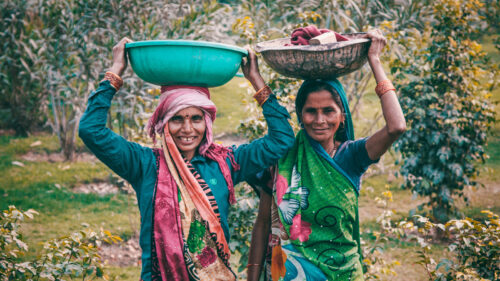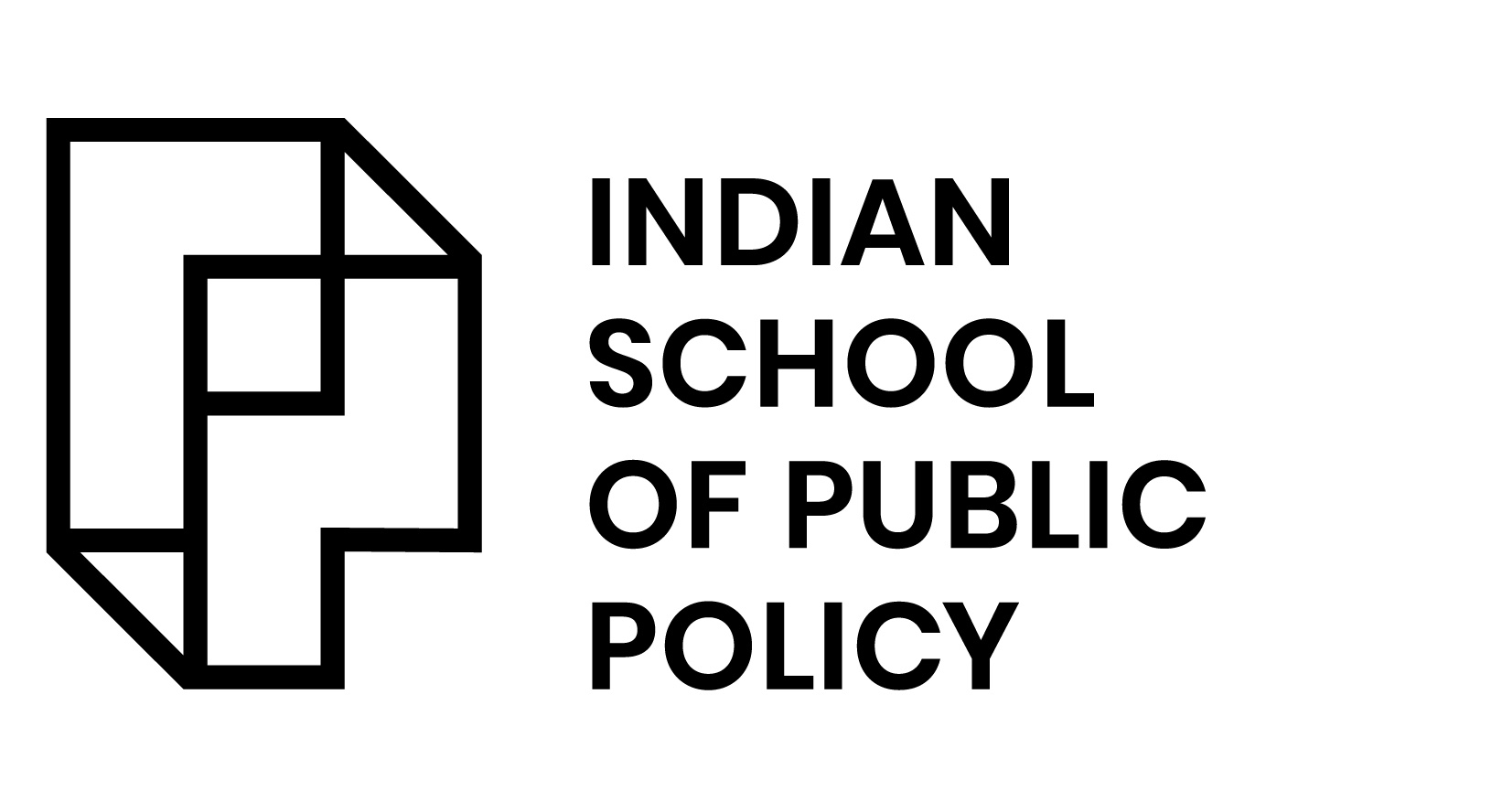
Making India’s Social Protection Gender Responsive: Opportunities for a post COVID-19 world

The COVID-19 pandemic has exacerbated pre-existing gender inequalities with its disproportionate impact on women. Even before the pandemic, women spent nearly 7 times more time on unpaid work compared to men1, which has surged further now.2 While lockdown restrictions and economic tensions are reported to have increased domestic violence,3 families are resorting to other negative coping mechanisms such as reducing food intake4, pulling children out of school5, child labour6 and child marriage7 – a major brunt of which is borne by women and girls. Women are also more likely to have lost jobs and less likely to rejoin the labour force8. These effects are compounded for rural, poor, marginalised, disabled and elderly women.
Despite this, women remained largely absent from the Indian government’s COVID-19 policy response. The limited gender-targeted relief measures were not only inadequate9 but also excluded a majority of poor deserving women.10 11 Even the ‘pandemic budget’ failed to recognise the plight of women, as witnessed by the cuts in schemes for women.12 13
Given this context, strengthening Social Protection (SP) is imperative, as explained in our previous article.14 Well-designed SP can reduce gender gaps in poverty, enhance women’s income and food security, empower them, and provide a lifeline for poor and vulnerable women. However, given that the failure to confront inherent gender norms makes a gender-neutral approach gender-blind, it is important that SP is also gender-responsive in order to build back fairer, not just better. This would entail a transition from the left end of the spectrum shown in Figure 1, towards its right.
Figure 1: The Gender Integration Continuum
Source: Adapted from UNICEF Office of Research – Innocenti (2020)15
Identifying the gaps
To formulate truly inclusive Gender-Responsive Social Protection (GRSP), one must first understand the gaps in existing SP. This section focuses on two schemes – one gender-specific (Pradhan Mantri Matru Vandana Yojana (PMMVY)) and one gender-sensitive (Mahatma Gandhi National Rural Employment Guarantee Scheme (MGNREGS)).
PMMVY is a conditional cash transfer (CCT) of INR 5,000 to a mother for her first live birth, paid in three instalments (see Figure 2). The problem with its design is that it looks at a woman primarily as a mother/caregiver, solely responsible for meeting the conditionalities, and not as an individual in her own right. 16 17 18 19 This reinforces the gender norm that a child’s health and well-being is the mother’s responsibility alone. By mandating Aadhaar cards for both parents20, it penalises single mothers in the process. Further, by restricting it to the first live birth, it also penalises women who face abortions, miscarriages, stillbirths and infant mortalities. PMMVY can be far more inclusive if all mothers, irrespective of age and marital status, are made eligible and it covers at least two births like Odisha’s Mamata scheme21. Furthermore, in times of crises, there should be considerations to increase the entitlement and remove conditionalities.
There are problems in its implementation too: cumbersome application process, delays in disbursement, slow grievance redressal, etc. due to which coverage routinely falls short of the target.22 23 In 2018-19, only around 14% of all pregnant women received full entitlements while 22% received it partially.24 The government must address these issues at the earliest and make the scheme uncomplicated and more women-centric.
Figure 2: How to avail PMMVY benefits
Source: Ministry of women and child development25
MGNREGS, on the other hand, is a rights-based gender-sensitive public works program. The gender-sensitive provisions, some shown in Figure 3, appeal to women, attracting over 50% of their participation year after year26. Yet, the scheme is not gender-responsive as it does not address the socio-cultural barriers to women’s participation or intra-household power dynamics. The key feature of MGNREGS is that it guarantees 100 days of employment to rural households. With COVID-19 induced job scarcity and return of male migrants to their villages, it remains to be seen whether women will be pressured by men not to compete for these jobs. The physically demanding nature of work also discourages many women. One way in which the type of work can be diversified and women can be remunerated for their care work is by expanding the programme to include social sector activities. Additionally, it must be ensured that the gap between design and implementation is minimum.27 Putting women at the forefront in planning, supervision and monitoring while countering gender norms that restrict women’s voice and mobility will not only make MGNREGS more efficient and transparent, but also change societal perceptions about women’s capabilities.
Figure 3: Gender Sensitive Provisions in MGNREGS
Source: Ministry of Rural Development28
Designing Gender-Responsive Social Protection
Once the limitations of existing SP are acknowledged, they can inform the design and implementation of future GRSP. The foundation of GRSP lies in Gender Mainstreaming, a strategy for making women and men’s concerns and experiences an integral dimension of any planned action, in all areas and at all levels29. It critically examines the gendered impact of the criteria (poverty or other forms of vulnerability) which necessitates SP intervention in the first place. Such an inquiry would reveal the major constraints faced by women (shown in Figure 4), which render the outcome of a gender-neutral approach gender-discriminatory.
Figure 4: Constraints that limit opportunities for women and girls
Source: Adapted from Kabeer (2008)30
These constraints are further intensified by their varying implications across the lifecycle of a woman31, which need to be accounted for in policy design. Lifecycle risks for girls necessitate addressing their nutritional, educational and health risks, for which CCTs (if designed properly and supported by supply-side institutions) can deliver strong outcomes. For older women, social pensions accompanied by access to affordable healthcare can prove to be most appropriate. For working-age women, reducing the unpaid work burdens of participating women through employment guarantee programs with gender-sensitive interventions like MGNREGS is expected to work best32. As demonstrated by PMMVY, programme targeting and conditionalities must be carefully considered and all components must be reviewed for their gender-sensitivity33. Moreover, approaches that address a single constraint and not the multidimensional deprivations faced by poor women are unlikely to deliver long-term gains. Thus, basic income support must be complemented with simultaneous interventions to empower women thereby improving their prospects for a sustainable exit from poverty.34
A gender-responsive framework builds on a gender-sensitive knowledge base. Responding to gender inequality as a source of risk and vulnerability in the intended SP requires a context-based understanding of the gender dynamics at play. A comprehensive Gender-Sensitive Poverty and Vulnerability Analysis (GSPVA) can generate evidence for the same (summarised in Figure 5).35 Such an analysis would enable policymakers to design the intervention in line with the gendered needs, priorities and perspectives of the population, by defining explicit gender-sensitive programme objectives, targets and indicators, to promote equitable outcomes.
Figure 5: Components of Gender-Sensitive Poverty and Vulnerability Analysis (GSPVA)
Source: Adapted from FAO Technical Guide (2018)36
Translating intent into impact
As demonstrated by MGNREGS, gender-sensitive design does not always deliver gender-equitable results due to improper implementation. Embedding a gender lens at each step of implementation is necessary to acknowledge the impediments like cultural resistance to women’s empowerment, lower literacy rate, digital gender divide, digital and financial illiteracy, that restrict women’s equal access to SP. Implementation should therefore be guided by a conscious effort to avoid exclusion on grounds of any disadvantage. Once participation has been ensured, the next step is to set up gender-friendly delivery mechanisms, institutional arrangements and grievance redressal.37
Any policy intervention must necessarily be complemented by routine evaluation throughout its lifecycle. It is perhaps even more important to ensure that the tools used for evaluation adopt a gender lens to map the intended outcomes with the actual impact. This is where the final component of GSPVA can assist implementers in assessing progress and redressing any shortcomings in programme design38. GSPVA can also provide a baseline to track the impact of the programme on gender-related issues.39 Gender audits can therefore provide important insights for course-correction as well as augment the evidence base for future interventions. Leveraging Self Help Groups for such audits can concurrently improve accountability and empower women collectives40.
Finally, an overarching element critical to the success of GRSP is the active participation of women throughout the design, implementation and evaluation stages. Women should be systematically represented within all the institutional bodies in the programme, from steering committees to frontline staff. A commitment to gender balance in program staffing can boost women’s participation in SP programs41. This in turn requires sufficient and sustained financing.42
COVID-19 has presented an opportunity to reset everything. It has brought the multidimensional deprivations faced by women to the fore, thereby stressing the need to revisit SP and evaluate them from a gendered lens. Women and their perspectives must cut across all stages of decision-making rather than merely emerging as an afterthought or being left out altogether43. While making SP gender-responsive requires immediate action, the long-term objective of rendering SP systems gender-transformative by redistributing power relations should be kept in mind. The ultimate aim, therefore, is to make socio-economic structures more equitable in the household and beyond.
References
- OECD Stat. (2021). Employment: Time spent in paid and unpaid work, by sex. https://stats.oecd.org/index.aspx?queryid=54757#
- Chauhan, P. (2020) Gendering COVID-19: Impact of the Pandemic on Women’s Burden of Unpaid Work in India. Gend. Issues. https://doi.org/10.1007/s12147-020-09269-w
- Rukmini, S. (2020, April 18). Locked down with abusers: India sees surge in domestic violence. Al Jazeera. https://www.aljazeera.com/news/2020/4/18/locked-down-with-abusers-india-sees-surge-in-domestic-violence
- Azim Premji University. (2020). COVID-19 Livelihoods Survey. https://cse.azimpremjiuniversity.edu.in//srv/htdocs/wp-content/uploads/2020/06/Compilation-of-findings-APU-COVID-19-Livelihoods-Survey_Final.pdf
- Seethalakshmi, S. (2020, August 16). Out-of-school children likely to double in India due to coronavirus. Mint. https://www.livemint.com/news/business-of-life/out-of-school-children-likely-to-double-in-india-due-to-coronavirus-11597574633476.html
- Ellis-Peterson, H. and Chaurasia, M. (2020, October 13). Covid-19 prompts ‘enormous rise’ in demand for cheap child labour in India. The Guardian. https://www.theguardian.com/world/2020/oct/13/covid-19-prompts-enormous-rise-in-demand-for-cheap-child-labour-in-india
- BBC News. (2020, September 18). India’s Covid crisis sees rise in child marriage and trafficking. https://www.bbc.com/news/world-asia-india-54186709#:~:text=India’s%20coronavirus%20lockdown%20has%20had,reports%20the%20BBC’s%20Divya%20Arya.&text=It%20is%20illegal%20for%20girls,18%20to%20marry%20in%20India.
- Rukmini, S. (2020, June 11). How covid-19 locked out women from jobs. Mint. https://www.livemint.com/news/india/how-covid-19-locked-out-women-from-jobs-11591772350206.html
- Dhawan, V., Pande, R., Rabinovich, L., et al. (2020, April 24). Getting by on Rice and Salt: Rural Women’s Coping Strategies during India’s Coronavirus Lockdown. Yale Economic Growth Center. https://egc.yale.edu/sites/default/files/2020-05/PMJDY%20-%20qualitative.pdf
- Pande, R., Schaner, S., Troyer Moore, C., et al. (2020, April 17). A Majority of India’s Poor Women May Miss COVID-19 PMJDY Cash Transfers. Yale Economic Growth Center. https://egc.yale.edu/sites/default/files/COVID%20Brief.pdf
- Somanchi, A. (2020, May 22). Covid-19 relief: Are women Jan Dhan accounts the right choice for cash transfers? Ideas for India.https://www.ideasforindia.in/topics/macroeconomics/covid-19-relief-are-women-jan-dhan-accounts-the-right-choice-for-cash-transfers.html
- Gupta, S., Ghosh, P. and Bindal, S. (2021, February 17). Budget 2021: No Lessons Learnt From the Disproportionate Impact of the Pandemic on Women? The Wire. https://thewire.in/women/budget-2021-gender-women-impact-of-pandemic
- Chadra, J. (2021, February, 1). Budget for Women and Child Development shrinks, poshan slashed by 27%. The Hindu. https://www.thehindu.com/business/budget/budget-for-women-and-child-development-shrinks-poshan-slashed-by-27/article33721315.ece
- Shrivastava, S. and Sanyal, R. (2021, February 1). Making India’s Social Protection Shock Responsive: Lessons from PDS amid COVID-19. Policy Review.https://policyreview.in/making-indias-social-protection-shock-responsive-lessons-from-pds-amid-covid-19/
- UNICEF Office of Research – Innocenti. (2020). Gender-Responsive Age-Sensitive Social Protection: A conceptual framework. https://www.unicef-irc.org/publications/pdf/WP-10_Gender-Responsive-Age-Sensitive-Social-Protection.pdf
- Cookson, T. (2018). Unjust Conditions: Women’s Work and the Hidden Cost of Cash Transfer Programs. California: University of California Press. DOI: https://doi.org/10.1525/luminos.49
- Poverty Insights. (2009). Cash transfers: To condition or not to condition? Institute of Development Studies. https://assets.publishing.service.gov.uk/media/57a08b3a40f0b64974000a4a/insights80.pdf
- Plagerson, S. (2024, September 8). Do Social Protection Programmes That Impose Conditionalities on Women Fail to Confront Patriarchy as a Root Cause of Inequality? Social protection and human rights. https://socialprotection-humanrights.org/expertcom/do-social-protection-programmes-that-impose-conditionalities-on-women-fail-to-confront-patriarchy-as-a-root-cause-of-inequality/
- Ladhani, S, Sitter, KC. (2020). Conditional cash transfers: A critical review. Dev Policy Rev.; 38: 28– 41. https://doi.org/10.1111/dpr.12416
- Ministry of Women and Child Development. (2017). PMMVY Scheme Implementation Guidelines. Government of India. https://wcd.nic.in/sites/default/files/PMMVY%20Scheme%20Implemetation%20Guidelines%20._0.pdf
- Department of Women & Child Development and Mission Shakti. (n.d.). Revised MAMATA Guidelines. Government of Odisha. http://wcdodisha.gov.in/Application//uploadDocuments/content/REVUISD_MAMATA_GUIDELINE_IN_ENGLISH.pdf
- PTI. (2018, January 15). Less than 2% beneficiaries get aid under maternity scheme. Hindustan Times. https://www.hindustantimes.com/india-news/less-than-2-beneficiaries-get-aid-under-maternity-scheme/story-vZqt5A43x8hO9vUI48oppO.html
- The Wire. (2019, November 29). Latest Data on PMMVY Coverage Shows Only Marginal Improvement in All-India Figures. https://thewire.in/government/latest-data-pmmvy-coverage-marginal-improvement-all-india-figures
- Dreze, J. (2019, November 19). The mother of non-issues: on maternity entitlements. The Hindu. https://www.thehindu.com/opinion/lead/the-mother-of-non-issues-on-maternity-entitlements/article30009380.ece
- Ministry of Women and Child Development. (2017). PMMVY Scheme Implementation Guidelines. Government of India. https://wcd.nic.in/sites/default/files/PMMVY%20Scheme%20Implemetation%20Guidelines%20._0.pdf
- Ministry of Rural Development. (2018, December 13). Women Participation Under MGNREGS. PIB. https://rural.nic.in/pressrelease/women-participation-under-mgnregs#:~:text=The%20women%20participation%20rate%20in,%2D19%20(as%20on%2007.12.
- Chopra, D. (n.d.) Gendering the design and implementation of MGNREGA. UNICEF Office of Research-Innocenti. https://www.unicef-irc.org/article/1934-gendering-the-design-and-implementation-of-social-protection-programmes.html
- Ministry of Rural Development. (2013). Mahatma Gandhi National Rural Employment Guarantee Act, 2005 Operational Guidelines. Government of India. https://nrega.nic.in/Circular_Archive/archive/Operational_guidelines_4thEdition_eng_2013.pdf
- UN Women. (2000). Gender Mainstreaming. https://www.un.org/womenwatch/daw/csw/GMS.PDF
- Kabeer, N. (2008). Mainstreaming gender in social protection for the informal economy. Commonwealth Secretariat.
- International Labour Office. (2003). Extension of Social Security. https://citeseerx.ist.psu.edu/viewdoc/download?doi=10.1.1.202.3459&rep=rep1&type=pdf
- Antonopoulos, R. (2013). Expanding social protection in developing countries: a gender perspective. Levy Economics Institute at Bard College Working Paper, (757).
- FAO. 2018. FAO Technical Guide 1 – Introduction to gender-sensitive social protection programming to combat rural poverty: Why is it important and what does it mean? Rome. 76 pp.
- FAO. (2018). Meeting Our Goals. http://www.fao.org/3/i6618e/i6618e.pdf
- FAO. 2018. FAO Technical Guide 2 – Integrating gender into the design of cash transfer and public works programmes. Rome. 88 pp.
- FAO. 2018. FAO Technical Guide 2 – Integrating gender into the design of cash transfer and public works programmes. Rome. 88 pp.
- Hidrobo, M., Kumar, N., Palermo, T., & Pe, A. (2020). Why gender-sensitive social protection is critical to the COVID-19 response in low- and middle-income countries. https://www.ifpri.org/blog/why-gender-sensitive-social-protection-critical-covid-19-response-low-and-middle-income
- FAO. 2018. FAO Technical Guide 2 – Integrating gender into the design of cash transfer and public works programmes. Rome. 88 pp.
- FAO. (2018). Meeting Our Goals. http://www.fao.org/3/i6618e/i6618e.pdf
- The Quantum Hub. (2020). Women’s Economic Empowerment in India. https://thequantumhub.com//srv/htdocs/wp-content/uploads/2020/12/Social-Protection-Section_WEE-Policy-Landscape-Study-Final.pdf
- FAO. 2018. FAO Technical Guide 3 – Integrating gender into implementation and monitoring and evaluation of cash transfer and public works programmes. Rome. 48 pp.
- Gulati, N. (2021). Budget 2021-22: A gender lens. Ideas For India. https://www.ideasforindia.in/topics/macroeconomics/budget-2021-22-a-gender-lens.html
- Holmes, R., & Jones, N. (2013). Gender and social protection in the developing world: beyond mothers and safety nets. Zed Books Ltd.
The views expressed in the post are those of the author and in no way reflect those of the ISPP Policy Review or the Indian School of Public Policy. Images via open source.

